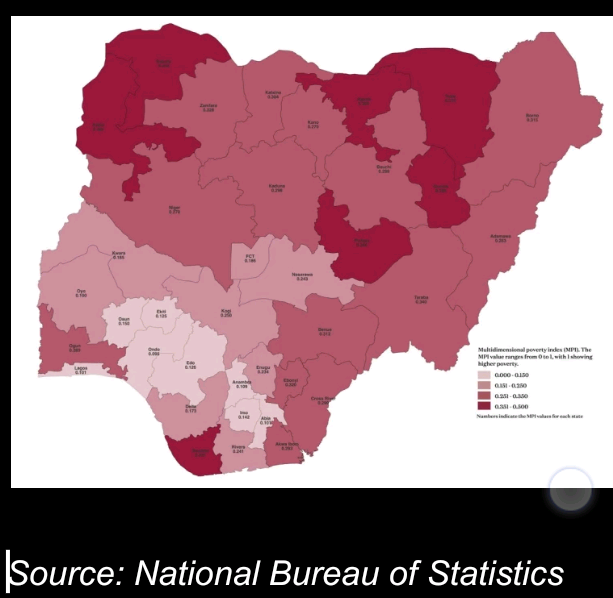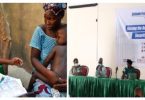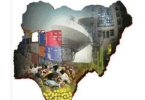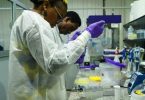Nigeria, the conspicuous giant of West Africa. A country that can no longer be ignored whether in the African continent or global happenings. The country has all the potentials of greatness. In the abundance of its natural resources, manpower and latent intellectual prowess, rich cultural heritage, creativity, the Arts, name it. But it is sad to know that no matter how rich a nation appears to be, mismanagement will curb its progress. Thus we will be highlighting the top 10 poorest states in Nigeria, as we read on.


Poorest States in Nigeria: World Bank Report (2022 to 2024)
The most recent World Bank report titled “A Better Future for All Nigerians: Nigeria Poverty Assessment 2022” stated that about 4 out of every 10 Nigerians live below the poverty line. In this article, we will examine just how poor the poorest states in Nigeria have become. We will identify the top 10 poorest states in Nigeria, and the contributing factors to such poverty levels we cannot possibly ignore.
Nigeria has been plagued with a series of developmental challenges since its independence. These challenges border on poor infrastructural development, little investment in education, widespread corruption, insecurity, tribal conflicts, climate shocks and more.
Also Read- 5 Most Beautiful Places to Visit in Nigeria
According to the National Bureau of Statistics, the Nigerian Multidimensional Poverty Index (MPI) of 2022 indicates that:
- Almost 6 out of 10 Nigerians – translating to about 133 million Nigerians – are ‘multidimensionally poor’. Multidimensional poverty is a lack of more than one poverty indicator; which include lack of income and basic amenities (e.g. education, clean water, healthcare, good sanitation, and cleaning cooking fuels).
- A large proportion of the poor population falls more disproportionately to the North. More factually, 65% of multidimensionally poor people live in the Northern states, while 35% live in the Southern states.
- The greater percentage of this poor population lacks clean cooking fuel, good sanitation and access to quality healthcare.
- About 72% of rural dwellers are multidimensionally poor, while 42% of the urban population are equally affected.
- About 67.5% of Nigerian children within the age range of 0 to 17 years are multidimensionally poor.
- Roughly half (51%) of all poor people in Nigeria are children.
- Almost 90% of rural children in Nigeria experience poverty.
These numerical accounts of poverty levels in Nigeria will be critical to any effort made to reverse the trend in times to come. It would require deliberate and well thought-out interventions by:
- the government,
- thought leaders and community heads,
- non-governmental organizations and civil organizations,
- social responsibility initiatives by prominent companies in the private sector,
- economically buoyant citizens and philanthropists,
- the international community, and
- active engagement and enlightenment of the citizens as well.
The World Bank suggested certain interventions that are urgently needed to curb the spread of poverty across Nigeria, in its report stated earlier. These include:
“(1) macroeconomic reforms (including fiscal, trade, and exchange rate policy);
(2) policies to boost the productivity of farm and non-farm household enterprises; and
(3) improving access to electricity, water, and sanitation while bolstering information and communication technologies”.
Top 10 Poorest States in Nigeria: The Multidimensional Poverty Index (MPI)
To take a step further, the top 10 poorest states in Nigeria are listed below. The Multidimensional Poverty Index (MPI) of each state in order of magnitude from the worst (or highest) to the lowest are also indicated beside each one.
State | Multidimensional Poverty Index (MPI) |
Sokoto | 0.409 |
Bayelsa | 0.401 |
Jigawa | 0.385 |
Kebbi | 0.385 |
Gombe | 0.380 |
Yobe | 0.370 |
Plateau | 0.365 |
Taraba | 0.340 |
Zamfara | 0.328 |
Ebonyi | 0.320 |
Poorest States in Nigeria and The Causes
Sokoto State
The poor rate of schooling, and high level of insecurity because of the operations of bandits in the state are major causes. Additionally, low human capacity development is another major factor that hinders the development of Sokoto state.
Also Read- 10 Largest States in Nigeria
Bayelsa State
The crude oil-rich state of Bayelsa faces infrastructural development problems. The situation has buffeted the naturally-endowed state into the class of the poorest states in Nigeria. Many of the roads are in bad condition. And there are a good number of abandoned road, health, power, and other projects. Also, some communities lack potable drinking water.
It is also on record that Bayelsa State has the least number of local government areas of all the states in Nigeria (just eight). This visionless partitioning of the state makes each local government difficult to manage. Because the state government is quite disconnected from the grassroots; and the local government areas are too large to manage easily.
Jigawa State
It is noteworthy that about 73.9% of children in Jigawa are multidimensionally poor. Most children in Jigawa state have little or no access to enough resources to cater for their survival, protection and development. Also, the mortality rate of children under the age of five years is very high. Finally, the number of schooled people is immensely small.
Kebbi State
Kebbi state is also guilty of high levels of child poverty and lack of protection. Additionally, the number of people who have obtained formal education is very low. Kebbi farmers also face challenges due to soil and climate. The environment is typically dry Sudan Savannah, strongly affected by conditions in the Sahara desert (towards its northern extremities).
Gombe State
There is serious inadequacy of potable water and quality health care services in Gombe state. There is also poor school enrolment rate.
Yobe State
Lands in Yobe State face the threat of encroachment by the Sahara desert (all the northwestern states of Nigeria are prone to it). Also, aside from a very low number of school children enrollment, girl children are sold off as brides to settle their parents’ debts. Yobe farmers are also mostly poor and underfunded. They need more money and support to boost their agricultural production efforts.
Plateau State
For over a decade now, Plateau State has been exposed to violent ethnic and religious clashes. Many lives and properties, including valuable farmlands, have been destroyed.
Plateau state naturally has unique cool highland temperatures, and soils that favor the planting of many indigenous and foreign food crops. It also has deposits of tin and other natural minerals. However, the problem of insecurity has tagged it one of the poorest states in Nigeria as we speak.
Taraba State
A vast number of the people of Taraba state (especially the women and youths) are unemployed. The state also faces ethno-religious attacks that have damaged lands, properties, and people’s lives.
Zamfara State
Zamfara state has for a long time been plagued by high poverty levels. It is rather surprising that Zamfara state is one of the poorest states in Nigeria. Ironically, the state is known to have gold deposits. A situation which led directly to massive uptake of arms by unemployed youths, who became terrorists and kidnappers. This further worsened the economic situation of the state.
It is rather surprising that Zamfara state is one of the poorest states in Nigeria. Ironically, the state is known to have gold deposits.
Ebonyi State
Ebonyi state was affected by years of urban migration, where youths preferred to dump their underdeveloped rural communities for the cities.








